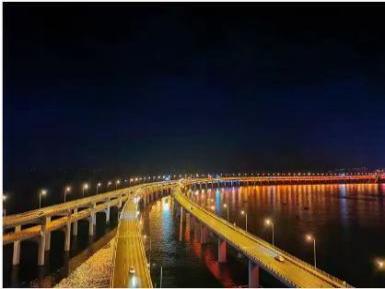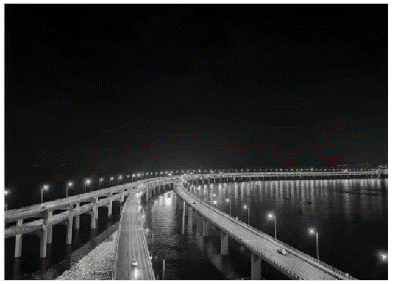1. Introduction
In recent years, there has been a significant demonstration of the promise of deep learning approaches in the domain of picture compression. Researchers have integrated singular value decomposition (SVD) with deep learning techniques to enhance image compression. This approach leverages deep learning algorithms to acquire knowledge and recreate low-rank matrices, hence achieving improved compression performance. The utilization of this integrated technique has resulted in a significant advancement in both the quality and speed of compression.
In conclusion, the advancement of SVD in the domain of image compression primarily encompasses the utilization of low-rank approximation techniques, the employment of SVD for the transmission and storage of remote sensing images, as well as its application in handling noisy clutter. Additionally, the integration of deep learning methodologies has been explored in the context of SVD compression. These recent advancements in research offer an expanded range of options and opportunities for the advancement and implementation of image compression methodologies, hence enhancing the effectiveness and excellence of image compression processes.
This study employs a literature review methodology to examine the existing research articles on image processing within the domain of SVD. The primary focus of this review is to analyze the analysis and feature extraction techniques applied to images using SVD. Specifically, the study aims to extract the eigenvalues and eigenvectors associated with the images. The presence of noise significantly impacts the overall quality of an image. The SVD is a mathematical technique that can be utilized to convert an image and express it in terms of its inverse singular values. The process of truncating the singular values allows for the elimination of noise present in the image, hence leading to an enhancement in the overall quality of the image. Furthermore, this study examines the application of SVD for image compression. SVD facilitates the decomposition of an image matrix into three matrices, with the singular value matrix serving as the core component. Image compression can be performed by preserving bigger single values. The researchers have achieved equilibrium in the correlation between the compression ratio of an image and the quality of the image after recovery by manipulating the quantity of singular values that are preserved.
The examination of SVD within the domain of image compression yields two significant consequences. Firstly, SVD offers a robust theoretical framework for the compression of images. The representation and decomposition of image information is achieved by decomposing the image matrix into the product of three matrices. The uniqueness of this decomposition is significant, as it serves as the foundation for information preservation in the compression procedure. The ordering and significance of the singular values play a crucial role in this regard. Furthermore, with regard to the preservation of information, it can be observed that the bigger singular values obtained through the process of SVD are indicative of the primary information and underlying structures present in the image. Conversely, the smaller singular values are associated with the more intricate details and noise within the image. By utilizing the low-rank approximation technique, the SVD method effectively preserves the primary characteristics and structures of the image, while simultaneously eliminating extraneous details and noise, hence enhancing the preservation of pertinent information.
2. Singular value decomposition
Singular value decomposition means when \( A∈{R^{M×n}} \) , then there is orthogonal matrices \( U∈{R^{M{×_{M}}}} \) And \( v∈{R^{N×n}} \) (1), making \( a=U∑{V^{N}} \) (2), \( Σ=[\begin{matrix}\sum _{1} & 0 \\ 0 & 0 \\ \end{matrix}] \) (3), and \( \sum _{1} =diag({Σ_{1}},{Σ_{2}},⋯,{Σ_{R}}) (4) \) . Its diagonal elements follow the order, \( {Σ_{1}}⩾{Σ_{2}}⩾⋯⩾{Σ_{R}} \gt 0,r=rank(A) \) . The singular values \( σi \) of the \( m×n \) matrix A are the characteristics of the matrix \( A{A^{H}} \) [1].
SVD is a crucial component in the field of picture compression. Typically, an image is comprised of a substantial quantity of data points, with each point serving as a representation of a pixel within the image. The data points can be represented using matrix decomposition with the utilization of SVD. In the field of image compression, the SVD technique is employed to break down the original matrix of a picture into the multiplication of three matrices, namely \( U, Σ, \) and V. The U matrix represents the left singular vector, the \( Σ \) matrix represents the diagonal matrix of singular values, and the V matrix represents the right singular vector. The square roots of the eigenvalues of the matrices correspond to the singular values, which play a crucial role in extracting significant information from the image. The process of achieving image compression involves appropriately truncating the single values. The process of truncating singular values involves retaining just the unique values that are the largest in magnitude, hence eliminating superfluous information from the image. The implementation of this technique has the potential to significantly decrease the amount of storage required for an image, while yet preserving a satisfactory level of image quality. A further significant utilization of SVD in the context of image compression is to the process of image restoration. In situations where picture data is compromised or corrupted by noise, the technique of truncated SVD can be employed to restore and recreate the image. By preserving bigger singular values, it is feasible to keep essential features present in the original image to a greater extent, resulting in the recovery of a crisper image. In summary, the utilization of SVD in image compression facilitates the achievement of picture data compression and subsequent recovery by the truncation of singular values. The utilization of this approach is prevalent within the domain of image processing and has demonstrated favorable outcomes. The primary theoretical foundation for utilizing SVD in the field of image processing is: 1) The stability of image singular values exhibits a high degree of robustness, whereby the singular values of an image remain relatively unaffected by minor perturbations. 2) The singular values of an image are determined by its implicit qualities rather than its visual attributes [2].
3. Research advances in SVD in the field of image compression
The compression technique discussed in this context is founded on the principle of low rank approximation. Specifically, the original matrix representing an image can be decomposed using SVD into the form \( UΣV\text{^}T \) . Here, U and V are orthogonal matrices, \( Σ \) is a diagonal matrix, and the diagonal components of Σ correspond to the singular values. The singular values correspond to the quantity of significant information included within the image and are arranged in a hierarchical manner based on their magnitudes. The concept of low-rank approximation involves obtaining an approximation matrix by selectively preserving the larger singular values at the forefront and assigning a value of zero to the other smaller unique values.
The primary focus and challenge in picture compression lies in the identification of a low-rank approximation matrix Ak for matrix A. In order to meet the stipulation that the quantity of data is lesser than that of matrix A, hence occupying a reduced amount of memory, matrix Ak must also preserve the primary characteristics or attributes, \( rank({A_{k}})=k,k \lt r=rank(A), {A_{k}}=\sum _{j=1}^{k} {σ_{j}}{u_{j}}v_{j}^{T},k \lt r \) (5) [3].
SVD is commonly employed for the transmission and storage of remote sensing images. SVD is a matrix transformation technique that relies on eigenvectors. It has found applications in several domains such as signal processing, pattern recognition, and digital watermarking technology. This study presents a lossy compression approach that utilizes an enhanced singular value decomposition technique for the compression of remote sensing images. The study introduces a novel remote sensing image lossy compression algorithm that is based on an enhanced singular value decomposition technique. This algorithm is characterized by its straightforward structure, absence of square effect, and favorable trade-off between compression ratio and computational complexity. The proposed algorithm proves to be an efficient method for lossy compression of remote sensing images in on-planet applications, as supported by relevant research [4].
The SVD technique is also employed for the purpose of addressing various types of noise present in three-dimensional Ground Penetrating Radar (GPR) data. The suggested approach involves decomposing the signal into two components, namely Gross and Detail, utilizing SVD. Subsequently, these components are recombined to reconstruct the GPR signal. This reconstruction process is performed after applying a two-dimensional Gaussian low-pass filter based on Wavenumber filtering. The GPR signal is subsequently merged to form the reconstructed GPR signal, resulting in the successful reduction of noise components while maintaining signal integrity [5].
4. Case study of image processing with matlab
A digital image can be represented as a two-dimensional function, denoted as f (m, n), where m and n represent spatial coordinates. The gray-scale value of a point (scaling) is determined by the function value of f at any given (m, n) coordinate [6].


(a) (b)



(c) (d) (e)



(f) (g) (h)
Figure 1. (a)-(h) Matlab processing of bridge image with SVD algorithm
The color image (a) undergoes a conversion process to transform it into a grayscale image (b). Subsequently, the grayscale image is subjected to compression using various values of K, resulting in the generation of figures (c) through (h). The codes of different singular value decomposition bridge plotis are depicted as follows.
data_color = imread( ‘bridge.png’);
figure(1)
imshow(data color)
data_gray = rgb2gray(data color);
figure(2)
imshow(data gray)
[U,D,V] = svd(double(data_gray));
rank(double(data_gray))
figure(3)
k = 1;
for r = 10:10:60
subplot(2,3,k)
data_image = U(:,1:r)*D(1:r,1:r)=V(:,1:r)’;
imshow(data image/256);
K=k+1
end
According to the findings above, the parameter k significantly influences the low-rank approximation of the singular value decomposition (SVD). This is due to the fact that when performing the approximation, only the first k singular values are utilized to replace all the singular values. In general, a smaller value of k leads to a larger error in the parameter. Consequently, while the compression rate may be higher, the clarity rate is lower [7]. The A-H diagram illustrates a gradual blurring of the image and a corresponding decrease in the clarity of visual features, facilitating compression.
5. Conclusion
The SVD method exhibits advantageous characteristics in terms of storage needs for the representation and transmission of images. The utilization of SVD enables the extraction of the most significant information contained within an image, hence facilitating the representation of the original image using a reduced amount of storage space. This technology offers significant advantages in terms of storage and network transmission, particularly in situations where there are constraints on storage resources. The SVD technique exhibits promising capabilities in the fields of image reconstruction and restoration. Besides its application in compression software, SVD can also be effectively utilized in the domain of picture reconstruction and restoration. Particularly, SVD exhibits promising outcomes in tasks such as noise elimination and image restoration. This phenomenon presents an increased number of study prospects within the domain of image processing and computer vision.
Furthermore, this paper exhibits certain limitations. Specifically, the examination and investigation of diverse facets lack depth, predominantly centering on the findings of prior researchers rather than presenting a substantial amount of original research outcomes. Consequently, future research endeavors should prioritize the enhancement of generating their own research findings.
In general, the utilization of SVD in the context of picture compression has demonstrated significant promise and has yielded noteworthy outcomes in both scholarly investigations and practical implementations. Nevertheless, there remain certain obstacles that must be surmounted, including the issue of computing complexity. Subsequent investigations may prioritize the enhancement of algorithmic efficiency and performance in order to more effectively cater to diverse application scenarios.



